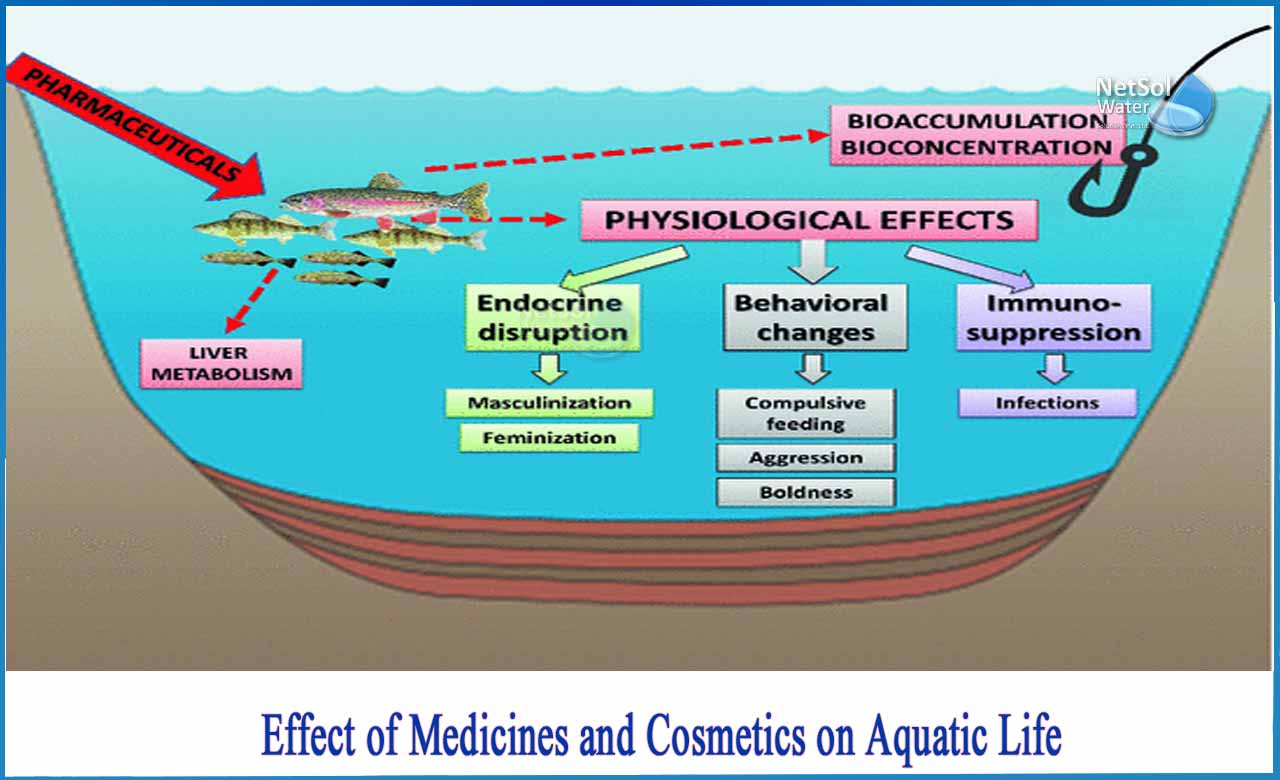What are effects of Medicines and Cosmetics on Aquatic Life?
Pharmaceuticals and personal care products (PPCPs) are developing pollutants that are becoming more widely used and have been shown to have harmful effects on aquatic life. The great majority of effective studies look at subcellular or cellular impacts, with considerably fewer looking at organismal and community-level effects.

The blog is about exposure in marine and estuarine algae, invertebrates, fish, and mammals.
What are the main environmental sources of PPCPs?
· The presence of humans (e.g., bathing, shaving, swimming)
· Drugs obtained illegally
· Antibiotics and steroids are commonly used in veterinary medicine
· Agribusiness
· Residues from the pharmaceutical industry which is well defined and controlled
· Hospital waste is a type of waste that can be found in a variety of places.
Individuals' contribution of chemicals to the environment has been largely disregarded. The detection of PPCPs in water and soil demonstrates that even seemingly innocuous acts such as shaving, applying lotion, or taking medication have an impact on the environment in which people live.
When people add PPCPs to the environment, they do so in the following ways:
· Medication residues are flushed down the toilet
· Externally applied pharmaceuticals and personal care items are washed down the shower drain
· Leftover or expired prescriptions are thrown away
What are the modifications in behavior?
Although chemistry and contraception have an adverse impact on fish sex changes, antidepressants can have other side effects. Compounds that travel via sewers and into rivers have an unanticipated impact on fish behaviour.
Fish exposed to these chemicals exhibit less aggressive behaviour, especially when responding to predators.
Drugs and detergent chemicals can be discovered in any water that has been contaminated by humans in any way. Even though this level of pollution is only 1 to 2 drops in the ocean, it poses a threat to environment and the entire ecosystem.
Scientific Concern as a whole
Pharmaceuticals have been found in our country's water bodies. Furthermore it is revealed that certain medications may be harmful to the environment. More research is needed to determine the extent of ecological harm and its possible impact on human health. To date, scientists have found no evidence of PPCPs in the environment having a negative impact on human health.
Individuals or domestic animals can release large amounts of PPCPs into the environment:-
- PPCP elimination is not possible with sewage systems. There are currently no municipal sewage treatment plants that are especially designed to remove PPCP or other uncontrolled chemicals. The effectiveness of removing PPCPs from treatment plants varies depending on the chemical and the specific sewage treatment facility.
- The dangers are unknown. Because the quantities are so low, the risks posed to aquatic species and people remain unknown.
What is the best way to get rid of unwanted pharmaceuticals?
Individuals can easily prevent pollution by properly disposing of their medications.
- Employ drug take-back programs or domestic hazardous waste pickup programs that accept medications
If no take-back programs are available in the area, contact the state and local waste management authorities (household waste disposal is primarily regulated at the state and locallevels) with questions about how to dispose of unused pharmaceuticals and whether these materials meet the definition of hazardous waste.
Netsol Water is Greater Noida-based leading water & wastewater treatment plant manufacturer. We are industry's most demanding company based on client review and work quality. We are known as best commercial RO plant manufacturers, industrial RO plant manufacturer, sewage treatment plant manufacturer, Water Softener Plant Manufacturers and effluent treatment plant manufacturers. Apart from this 24x7 customer support is our USP. Call on +91-9650608473, or write us at enquiry@netsolwater.com for any support, inquiry or product-purchase related query.



